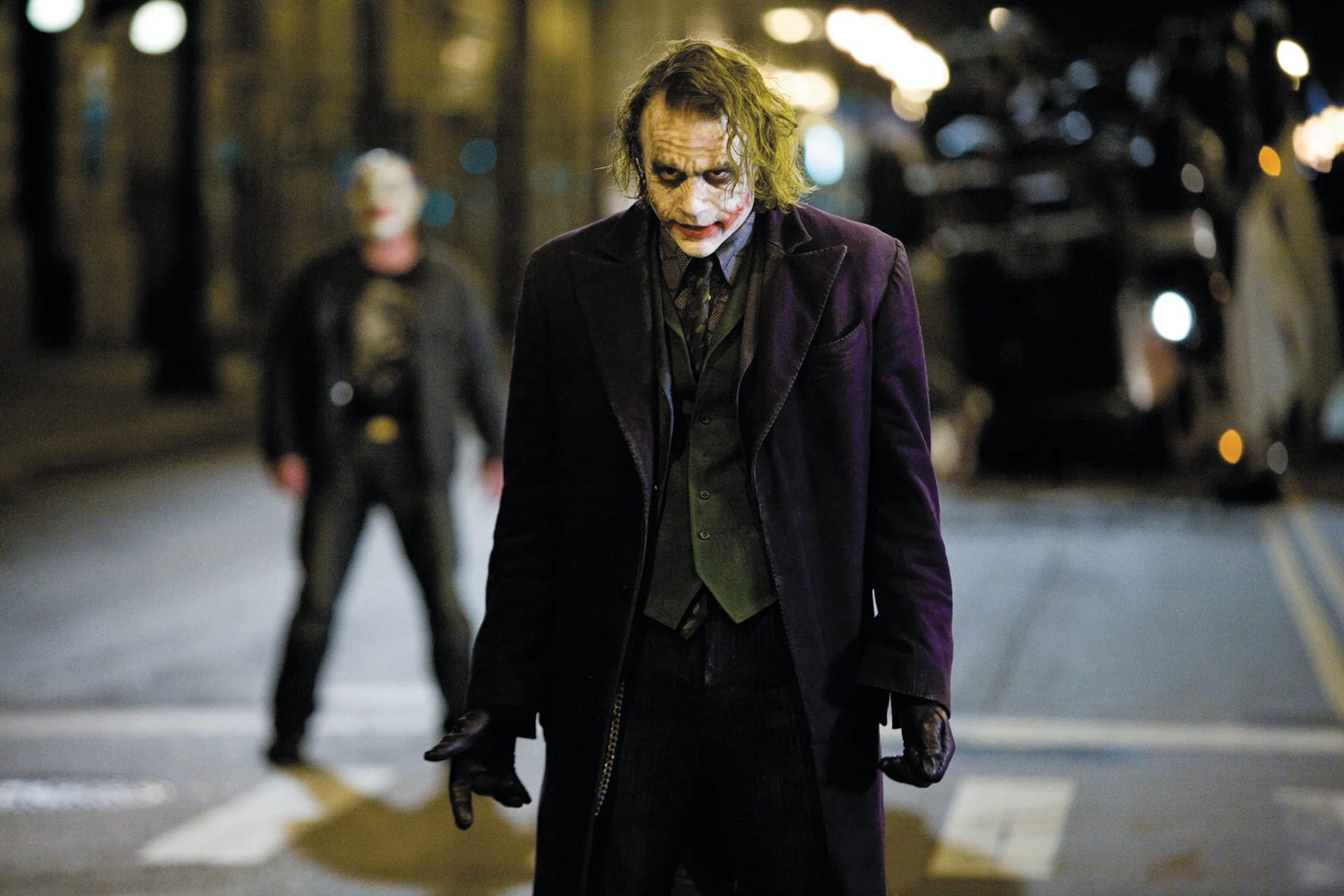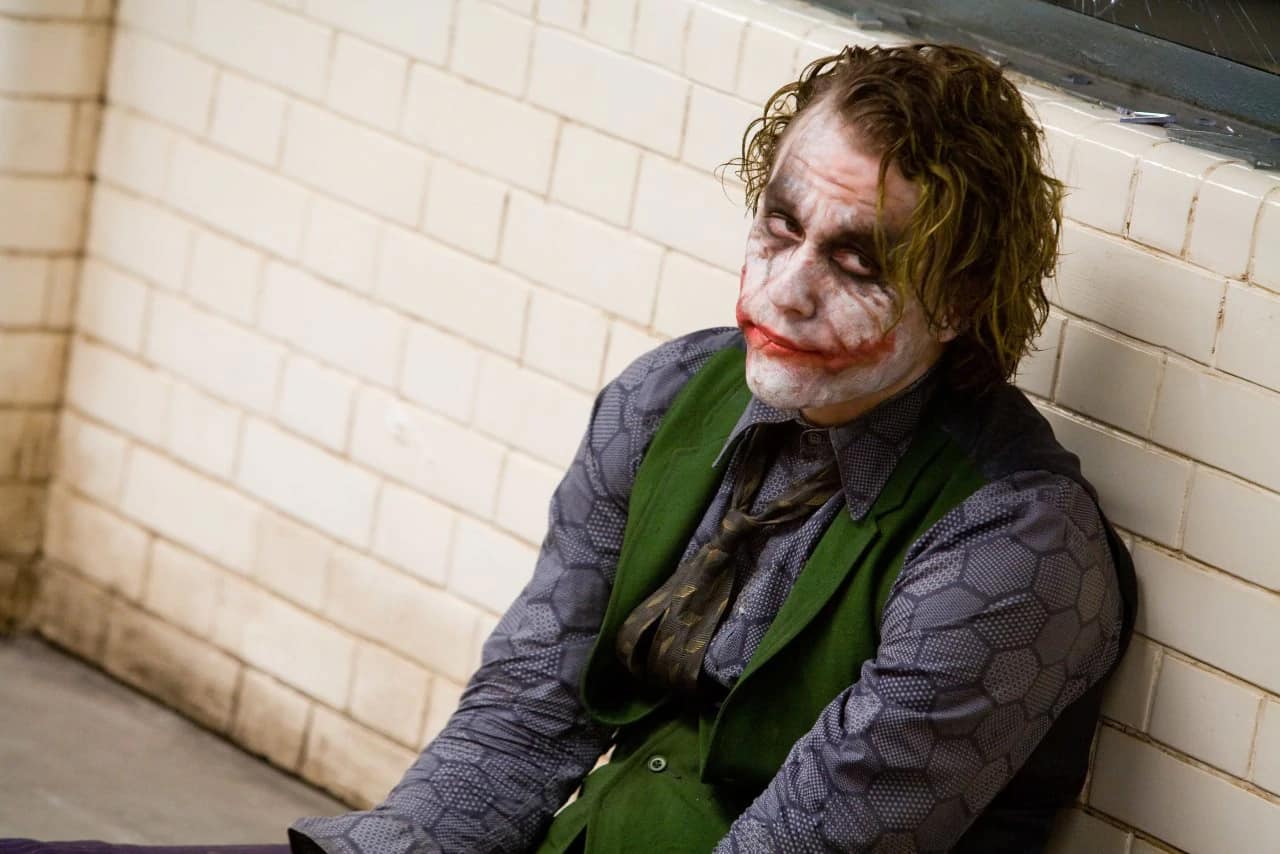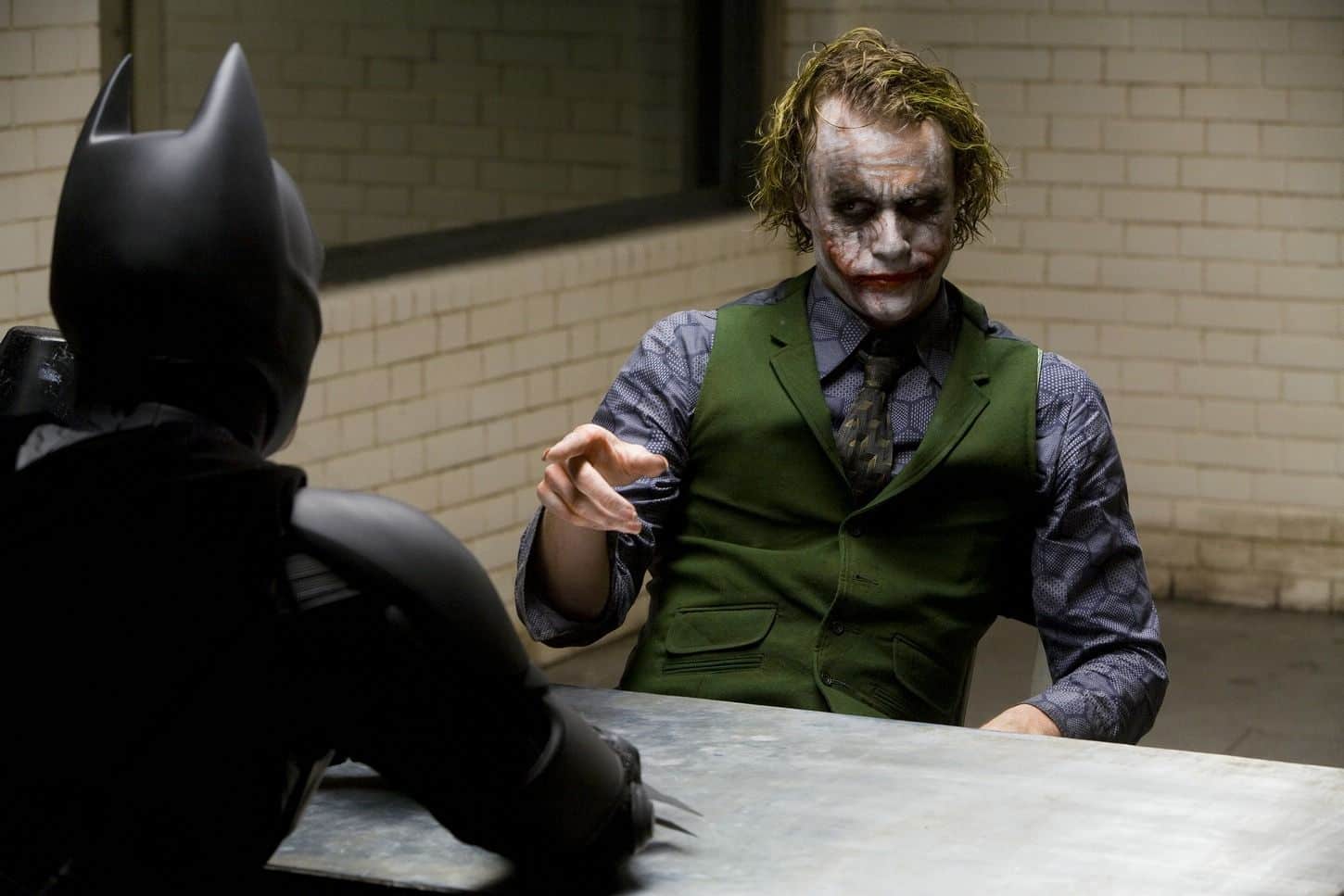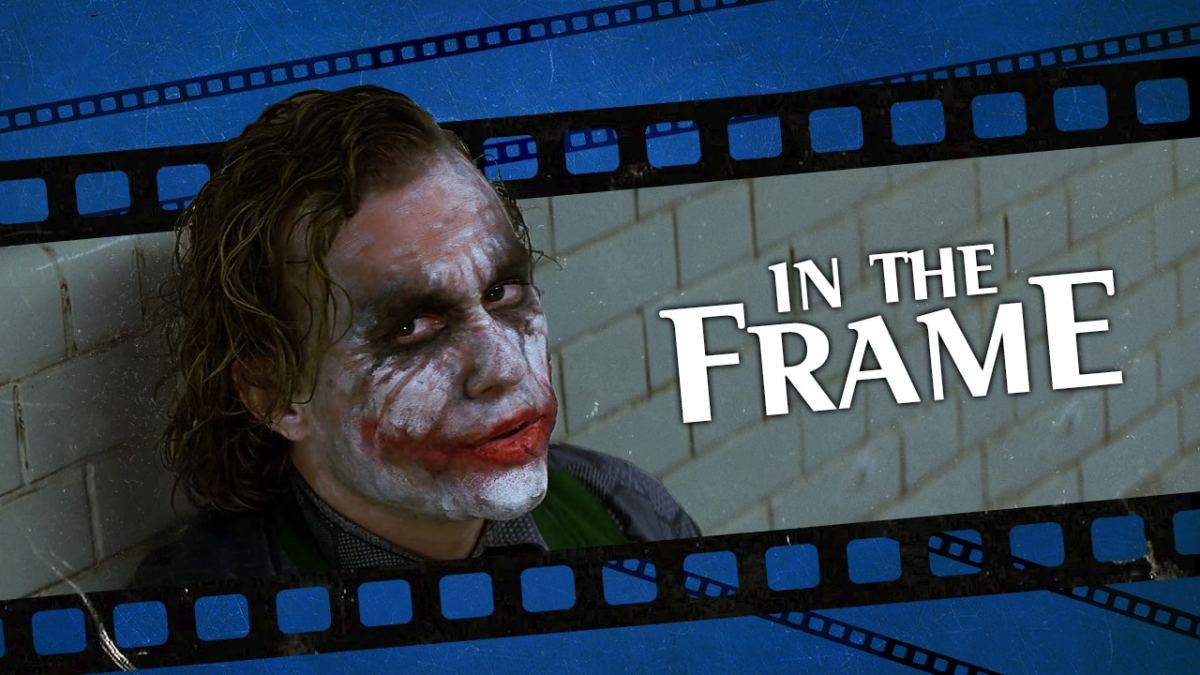This week’s In the Frame video deals more directly with the mechanics of how the Joker distorts Christopher Nolan’s The Dark Knight. The below article explores the idea from a more thematic perspective. Be sure to enjoy both!
The Dark Knight is unique in Nolan’s filmography because it is a (mostly) linear film.
As many critics have noted, Nolan’s films tend to distort chronology. Memento features two plots, one moving forward in time and one moving backwards. Insomnia features frequent cuts to an event that occurred before the movie’s main narrative kicks off. The Prestige jumps between two competing accounts of a shared history. Batman Begins drifts into and out of memory as it offers an origin for the Caped Crusader. Even Dunkirk has three different timelines that only overlap at the climax.
There is an obvious reason for this. Most of Nolan’s films are anchored in the subjective experiences of their protagonists. The strange chronology of Memento allows audiences to experience each scene like Leonard Shelby (Guy Pearce), with no memory of what came before. The narrative of Batman Begins ebbs and flows with memories of Bruce Wayne (Christian Bale). Dunkirk focuses on the subjective experience of the passage of time of the characters moving through it.

Outside of a couple of montages that depict asynchronous events and a very quick flashback shot of Rachel Dawes (Maggie Gyllenhaal), the bulk of The Dark Knight unfolds in a very straightforward manner. Events occur in sequence, and the plot moves organically from one plot point to the next. Nolan still structures the film so that he can cross-cut between multiple locations and story threads at key moments, but the narrative is as straightforward as any Nolan has constructed.
This choice serves an important thematic function. The rigid linear structure of The Dark Knight exists in stark opposition to the presence of the Joker (Heath Ledger). It has become a cliché to describe the Clown Prince of Crime as an “agent of chaos,” but he truly represents that within the narrative framework of The Dark Knight. The Joker isn’t just a threat to the ordered world of Gotham, but also a challenge to the structure of the film around him.
In many ways, the Joker is a typical Nolan protagonist. Most of Nolan’s protagonists are obsessives who seek to impose their own order on a chaotic reality. In Memento, Leonard builds himself an unsolvable mystery to assuage his own guilt over his responsibility for the death of his wife (Jorja Fox). In Batman Begins, Bruce builds Batman to escape his own anger and guilt over the death of his parents. Characters set up rules to govern their behavior and to order the world.
The tension in a Christopher Nolan film often results from when his protagonist’s worldview comes into conflict with immutable reality and when the systems and rules that these men have built to protect themselves break down. In Inception, Dom Cobb (Leonardo DiCaprio) spends most of the movie lying to himself and to his team in order to maintain the illusion of control. Arthur (Joseph Gordon-Levitt) wryly remarks on “how much time Cobb spends doing things he says never to do.”

The fractured structure of these films reflects the subjective experience of their protagonists, inviting the audience to experience the film from the perspective of these leading characters. Nolan explains his approach through the metaphor of a maze, “You don’t want to be hanging above the maze watching the characters make the wrong choices because it’s frustrating. You actually want to be in the maze with them, making the turns at their side, that keeps it more exciting.”
In The Dark Knight, the Joker is so terrifying because the audience is looking at a Nolan protagonist from the outside. For all that the Joker might talk about how he wants to prove that Batman lives in “a world without rules,” the Joker actually wants to impose his rules upon the world. The Joker’s complicated plans are nothing but sets of rules. When he takes Rachel and Harvey (Aaron Eckhart) hostage, he goads Batman, “You’ll have to play my game if you wanna save one of them.”
The Joker remains entirely alien over the course of The Dark Knight. Borrowing a trick from Alan Moore and Brian Bolland’s The Killing Joke, the film declines to give the character a clear origin. However, his ultimate objective is to validate his belief that people are “only as good as the world allows them to be.” All of his tricks and gambits are set up to validate that argument, even if — like Leonard or Cobb — he frequently breaks his own rules to prove his point.
This is the heart of the conflict between Batman and the Joker. In Batman Begins, Bruce constructed Batman as “a symbol” that could be “indestructible” and “everlasting,” a representation of what Gotham could be that might speak to citizens and “shake them out of apathy.” Bruce constructs Batman as a narrative. In The Dark Knight, the Joker is explicitly positioned as a counter-narrative. As such, he seems to wage a guerrilla war against the movie itself.

The Joker exerts such a strong pull that he bends the film around him. The iconic introductory shot, in which the character pulls off his mask to announce himself to the camera, is slightly out of focus — as if the character is straining against the film. The character seems to push against Nolan’s authority in other ways; Heath Ledger reportedly directed the character’s video messages himself. Nolan’s camera work becomes notably more erratic and jerky when focused on the Joker.
At the end of the film, Bruce has fought the Joker to a standstill. The two ferries refused to blow themselves up. However, the Joker has “an ace in the hole.” He has corrupted Harvey Dent. Bruce will have to cover up Harvey’s crimes to preserve the legend of Gotham’s so-called “White Knight.” Of this stalemate between the Joker and Batman, the Joker laughs, “This is what happens when an unstoppable force meets an immovable object.”
Still, there is a sense in which The Dark Knight bends towards the Joker. In his final scene, as the Joker hangs upside down, the camera begins to rotate. It’s a classic Nolan shot, one employed in films like Inception, Interstellar, and Dunkirk. The camera is spinning to face the Joker on his own terms. The world is upside down, but the Joker looks into the camera head on. Notably, it emulates an earlier shot from the Joker’s own video of newscaster Mike Engel (Anthony Michael Hall).

“Madness, as you know, is like gravity,” the Joker tells Batman. The film literalizes this, the camera moving as if caught in the villain’s orbit and pull. It’s also an interesting turn of phrase, as Nolan’s films repeatedly return to the idea of gravity as a universal constant. A much more humanist film, Interstellar argues that love is a universal force equivalent to gravity. Indeed, Abigail Brand (Anne Hathaway) explains that “the only thing that can move across dimensions, like time, is gravity.”
In Interstellar, Brand creates an equivalence between gravity and love as forces that are strong enough to transcend “the dimensions of time and space.” Given how important time is to Nolan as a filmmaker, that is an impressive claim to make. In The Dark Knight, the Joker appears to make the same argument for his own madness. The way that the film seems to buckle under the character’s influence suggests that there is some truth in the statement.
Heath Ledger deserves all the credit that he has earned for his performance. However, one of the reasons that the Joker works as well as he does is because the linear structure of the film is designed to play off the character so aggressively. The Dark Knight must be structured unconventionally for a Christopher Nolan film, if only so that the Joker can hijack control of the narrative and truly “introduce a little anarchy” into the film’s otherwise tight construction.





